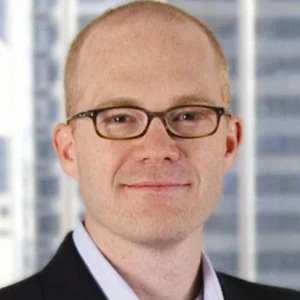The surge in infrastructure spending that President Donald Trump has proposed promises to be a boon for companies that manufacture equipment used in large-scale construction projects. During the 2016 presidential campaign, then-candidate Trump proposed an increase in infrastructure spending of $1 trillion to create jobs and repair the nation’s crumbling roads, bridges, and transportation assets. Following the election, the incoming administration reaffirmed this objective, and congressional leaders on both sides of the aisle have expressed support.
The combination of bipartisan support and broad public enthusiasm makes it likely that the level of infrastructure expenditure will grow substantially over the coming years. The method of funding adopted will probably include tax incentives as a prominent feature, given Republican support for this approach and the party’s control of the White House and both houses of Congress. Investments will likely span infrastructure sectors, including surface transportation, energy, and communication, with a heavier emphasis on projects (such as toll roads) that can generate a direct return for private investors. Nevertheless, the magnitude of the investment, the timing of its enactment, and the sources of funds remain unspecified. The administration and Congress need to agree on the details of an infrastructure investment plan, and a clear picture is unlikely to emerge until later this spring.
Despite the uncertainty, machinery manufacturers need to prepare for the new business environment. To help manufacturers position themselves to capitalize on the emerging opportunities, we review what we know—and don’t know—about what lies ahead for US infrastructure investment.
Road Work Ahead: US Infrastructure in Need of Repair
The American Society of Civil Engineers (ASCE) recently assigned the United States a grade of D+ for the state of its infrastructure, citing lack of repair and maintenance across infrastructure systems ranging from roads and bridges to levees, schools, airports, and waterways. The ASCE estimates that US infrastructure spending from 2016 through 2025 will reach $1.9 trillion; however, it further estimates that achieving a state of good repair for infrastructure nationwide would require an additional $1.4 trillion over the same period.
This total suggested investment of more than $3 trillion spans multiple categories:
- Transportation (roads, rail, airports, and shipping)
- Energy (generation and transmission)
- Water and waste (including water supply, water treatment, and sewage treatment)
- Social (hospitals, law enforcement, public housing, and schools)
- Communication (fixed, mobile, and satellite)
Although there are myriad opportunities for investment in US infrastructure, the areas most in need of repair are transportation systems. The ASCE estimates a funding shortfall of approximately $900 billion from 2016 through 2025. The society considers approximately 20% of roads and 40% of bridges nationwide to be “deficient,” meaning that they require repair in order to meet national safety guidelines. The figures are significantly worse in metropolitan areas. Among individual states, California, Massachusetts, New York, and Pennsylvania require the largest investments, owing to the age of the infrastructure in metropolitan areas. Further, congestion is among such areas’ costliest problems: the ASCE considers the infrastructure of approximately 40% of US cities to be congested at peak times, depressing economic activity and increasing energy costs.
Real spending in the form of infrastructure-related investment has diminished over the past two decades as a result of increased costs and decreased funding. The US government has not raised the federal gasoline tax—long the primary source of funding for highway infrastructure—since 1993, when it adopted the current rate of $0.18 per gallon. The number of gallons of gasoline consumed annually in recent years has been fairly flat, leading to correspondingly flat funding. Simultaneously, input costs for construction projects have outpaced inflation. States have been unable to close the funding gap because of budget constraints, such as those related to lower revenue from taxes and higher pension and Medicare liabilities.
The New Administration’s Outline for Infrastructure Investment
In an otherwise contentious campaign, Hillary Clinton and Donald Trump agreed on the need for additional infrastructure investment. After the election, President Trump continued to emphasize that infrastructure improvements would be a focus of his administration. He proposed a plan to increase total investment by $1.0 trillion through 2025, giving states significant flexibility with regard to spending the funds. The president touts the plan as revenue-neutral because it relies on tax incentives to stimulate investment in infrastructure, though whether this self-sustaining aspect of the plan is achievable remains unclear. In addition, Trump has begun to act on his campaign pledges to roll back Obama-era energy regulations (such as restrictions on shale oil extraction) and to grant permits for new pipelines, which will likely spur near-term investment in those sectors.
The Trump administration views the proposed investment in infrastructure and the relaxation of regulations as ways to stimulate long-term overall economic growth and to bolster direct employment in the short term. As outlined, the president’s plan calls for offering $137 billion in tax incentives to generate this additional $1 trillion investment in facilities that the government, private corporations, and public-private partnerships (PPPs) operate. Specifically, equity investors in infrastructure projects would receive a tax credit equal to 82% of their investment, in addition to any returns.
Overcoming Roadblocks to Increased Investment
To come to life, the president’s proposal must receive congressional approval, and thus far Congress has offered a mixed response to the plan. Congressional Democrats applaud the incremental investment in infrastructure but warn that they will not back any bill that spurs investment through tax credits alone. After the election, House Minority Leader Nancy Pelosi said, “We can work together to quickly pass a robust infrastructure jobs bill,” and later emphasized that “the compromise is not to make infrastructure a gift of tax breaks.” Senator Bernie Sanders took a harder line, describing the Trump plan as “a scam that gives massive tax breaks to large companies and billionaires on Wall Street.”
Congressional Republicans support investing in infrastructure, too, but they have emphasized that any spending bill must not increase the federal debt. Speaker of the House Paul Ryan stated that boosting funding for new and existing infrastructure projects would be a top priority for the House of Representatives in 2017, emphasizing the important role that private investors will play. But Representative Bill Shuster, chairman of the House Transportation and Infrastructure Committee, has indicated that the details of the package will not take shape until May at the earliest, saying, “We’ll put together a big infrastructure package” in the “second 100 days” of the new administration. Senator John Thune, chairman of the Senate Commerce, Science, and Transportation Committee, expressed doubt about the $1 trillion price tag, saying, “I think it’s going to come down to figuring out just actually what’s achievable.” The fact that increased federal expenditures on infrastructure enjoys the support of 75% of the American public (according to a March 2016 Gallup poll), while only 11% oppose it, may encourage Washington to act.
Complicating passage of funding legislation through Congress is the need to devise a plan that spreads the investment fairly uniformly across the nation. Uniformity is a prerequisite to gaining broad approval from legislators representing all 50 states, not merely those hosting a relatively high concentration of projects that would benefit from the tax incentives. For example, certain states—such as Florida, New York, Pennsylvania, and Texas—have heavy concentrations of toll roads, so those states are better positioned to quickly execute projects using incremental federal funding. Moreover, certain states are in more serious need of infrastructure repairs than others, increasing the likelihood that the government will undertake improvement projects in those areas in the near term.
Infrastructure investments carry significant regulatory risks for investors, especially for those participating in a PPP. Long-term cash flows are critical if investors are to realize a gain, and a change in the regulatory landscape during the lifetime of the asset can adversely affect those cash flows. For example, an investor in a toll road project will want assurance that the relevant regulatory body will not permit construction of a competing toll-free road nearby in the medium to long term. Today, 33 states have some form of regulatory framework in place to protect investors; California, Florida, and Virginia, among others, stand out as “best practice” states. Mitigating risks for investors will be essential to building the pipeline of projects required for execution of the president’s plan—and it is unclear whether enough projects will emerge to fill a $1 trillion pipeline.
President Trump does not need to obtain congressional approval before rolling back Obama-era regulations that restrict some investments in energy. Consequently, spending in this area is likely begin much sooner than elsewhere. The president has signaled a willingness to engage in other tactics—such as dealmaking with private companies—to advance policy priorities, and he may use these tactics extensively to encourage infrastructure development. For example, federal agencies have the power to award government contracts to private companies, and the new administration may use this discretion to provide incentives to companies to undertake infrastructure projects as part of a larger government package.
The Implications for Machinery Manufacturers
Construction machinery manufacturers should expect infrastructure investment to increase, though exactly how much, in which sectors, and in which geographies remain highly uncertain. For most of the past two decades, Congress has authorized only short-term highway funding plans. In December 2015, however, Congress and President Obama agreed to a five-year, $305 billion highway-funding plan. In addition, large local infrastructure projects were recently passed in Los Angeles ($120 billion) and the Seattle area ($54 billion). These developments, coupled with the promise of a massive spending surge under the Trump administration, may give investors in the market the confidence to initiate larger-scale projects with significant capital expenditures on machinery.
States with relatively strong regulatory frameworks in place to protect investors are more likely to see an influx of investment via PPPs. States such as California and Virginia have not only a firmly established regulatory framework, but also a need and a willingness to invest in projects such as toll roads and railway systems. A short-term influx of investment into sectors such as energy and water is likely when the new administration rolls back regulations in these areas.
To capture the emerging opportunities, leaders in the machinery industry should focus on three key areas:
- Work proactively to capture opportunities. Machine manufacturers should identify state priorities and work with engineering, procurement, and construction (EPC) companies to create lists of shovel-ready projects. EPC companies, operators, and financing organizations can form consortia around specific projects, and each consortium can then present the projects to state governments. A manufacturer should identify these consortia and projects so that it can target its commercial resources at the emerging customers and get a seat at the table early. This proactive approach will increase the likelihood of success for both the machine manufacturer and the consortia.
- Be flexible in light of uncertainty. As it remains unclear how much funding for infrastructure will become available in which geographies and in which sectors, the most flexible manufacturers will be in a position to reap the greatest benefit when opportunities emerge. Specifically, flexibility in manufacturing operations and supply chains will remain critical.
- Be ready to work with EPCs and other machine purchasers in new ways. In particular, manufacturers should work with customers on financing models that emphasize speed and flexibility so that they can respond to what could be a large and rapid increase in demand. If all of the proposed $1 trillion incremental investment is realized, it will represent an increase of approximately 50% in total infrastructure spending. Not all contractors and EPCs have the balance sheet to finance that level of growth, and this fact presents manufacturers with an opportunity to introduce new financing models to assist customers.
After decades of underinvestment and short-term federal spending patches, a consensus is emerging that investment in infrastructure should increase. Although the timing, level of funding, and specific project types remain uncertain, a significant increase is likely to occur. Machinery manufacturers that can apply foresight, flexibility, and creativity to emerging situations will be in the best position to capture the tremendous value at stake.








